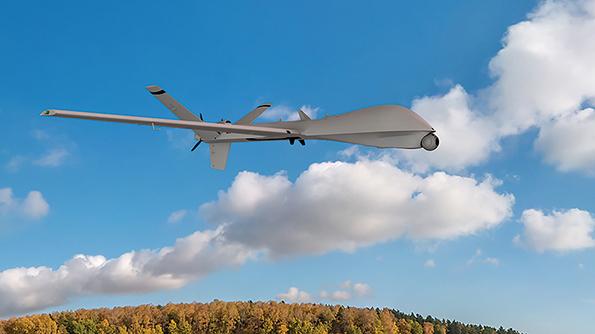
Israel has started development of a self-defense laser weapon system for aircraft, sources in the Israeli defense sector say.
The country’s defense ministry also plans to perform field trials of a ground-based laser system in 2020 using technology developed by Rafael and Elbit Systems, according to Israeli media reports.
- Israeli effort appears similar to the U.S. AFRL Shield program
- Airborne application implies progress on ground-based lasers
Elbit Systems, which produces laser countermeasures, rangefinders and pointers, is developing the airborne technology demonstrator for manned and unmanned aircraft under a defense ministry contract, sources say. The aim of the project to is provide air superiority and air defense, they say.
A self-defense laser system includes a beam-tracking system to illuminate the target and a high-power laser to intercept the incoming missile with a blast of thermal energy. A podded system includes separate subsystems for power generation and thermal management within the pod. A more advanced system integrated inside an aircraft would require a significant internal capacity for onboard power generation and cooling.
Self-defense lasers for aircraft tend to fall into a power class of 50-100 kW. Elbit Systems’ laser technology has transitioned from highly inefficient flashlamp-pumped to solid state, diode-pumped lasers. The change improves overall efficiency from about 1% to about 35%. But a diode-pump laser still requires a power-generation capacity of 150-300 kW to produce a 50-100-kW laser beam, with about 100-200 kW of waste energy, or heat, that must be cooled or vented overboard.
The outlines of the Israeli program appear similar to the U.S. Air Force Research Laboratory’s (AFRL) Self-protect High-Energy Laser Demonstrator (Shield) program. In fiscal 2021, the Air Force plans to test in flight a Shield pod, which includes a Lockheed Martin laser, Northrop Grumman beam tracker and Boeing pod system. Last May, the AFRL demonstrated the ability to intercept missiles from a ground-based surrogate for Shield.
The AFRL had borrowed the Army’s 150-kW High-Energy Laser Weapon System (HELWS) for the ground-based demonstration. The challenge for Shield is to miniaturize the components for the HELWS so that they can be installed and operate in the smaller and harsher environment of an aircraft.
As HELWS served as a building block for Shield, Israel’s investments in ground-based high-energy lasers for air defense likely served as a steppingstone to the Elbit demonstrator. Rafael, Israel Aerospace Industries and Elbit have acknowledged interest in such programs for several years. Rafael, in particular, has been the most public. The Haifa-based, state-owned company unveiled the “Iron Beam” concept at the Singapore Airshow in 2014, presenting a system that could intercept rockets, unmanned aircraft systems and ballistic missiles with lasers instead of the Iron Dome’s rocket-powered, hard-kill interceptors.
Although Israeli companies decline to provide updates on ground-based systems to outsiders, there is evidence that such concepts have advanced in maturity over the last five years. Israel’s leading financial newspaper, Globes, reported in 2018 that the Israel Defense Forces launched development of a laser interceptor system in 2016 and was then “on the verge of being ready” for operations. An anonymous source quoted in the article said a system could be ready to enter service by 2021 or possibly earlier, depending on funding levels.
The Rafael-designed Iron Dome now protects Israel from rocket attacks, with a reported successful intercept rate of about 85%. Although Iron Dome has been highly effective, Israel remains concerned about certain scenarios, such as a third Lebanon war. The second Lebanon war in 2006 spurred development of the Iron Dome system, as the Iran-backed Hezbollah group launched thousands of Qassam rockets into Northern Israel. In the years since, Israel and U.S. government officials have accused Iran of smuggling thousands of unguided and guided rockets to Hezbollah cells in Lebanon and Syria. A 2018 report by the Center for Strategic and International Studies estimated that Hezbollah then possessed a stockpile of 130,000 rockets.
Using the Israeli government’s touted 85% success rate for Iron Dome, Israel would have to stockpile at least 155,000 interceptors at a daunting estimated cost of $50,000 each. An interception system based on high-energy lasers, by contrast, would be expensive to develop and field, but the cost per interception would be almost negligible.





